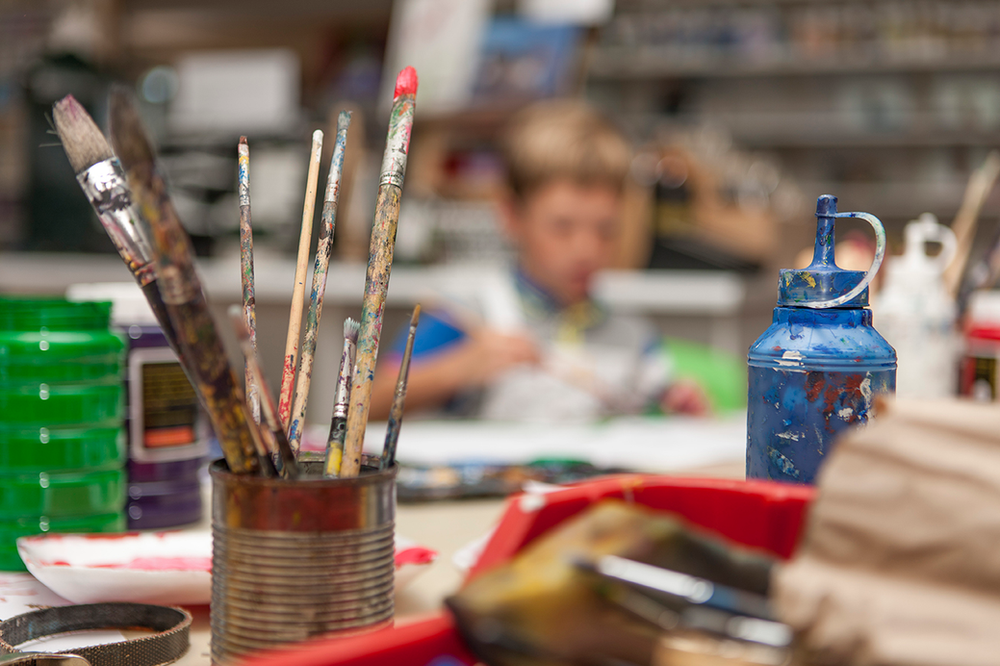
History demonstrates an ongoing tension between back-to-basics school reform and models that focus on the “whole child,” like Montessori, a tension that is reflected on how and when the arts are integrated into “real school.” When school reform efforts are focused primarily on student achievement in standardized tests, education in the arts is usually cut. But a sustained integration of the arts should not be justified by its influence on standardized tests. To justify the integration of the arts through its promise to support other content is to devalue the worth of art education in its own right.
We integrate the arts in Montessori classrooms not just because they support other academic learning, although they certainly do. The arts demonstrate the ancient human need for communication, with evidence of music, visual arts, dance and theatre from the earliest documented societies. Because we are driven intrinsically to communicate, humans develop increasingly subtle and complicated means of doing so. The arts support our ability to communicate in nonlinguistic modes, to enrich and expand the complexity and nuances of that which we hope to communicate. We want to create environments within which children develop the ability to create meaning through repeated opportunities both to internalize and to express it. The arts allow for purposeful meaning-making. When students can integrate social, emotional, physical and intellectual understanding through the creation or experience of art, that understanding is made more personal, more responsive and more lasting than when students receive it in through a single modality.
The arts offer experiences for learners to expand their social, emotional and intellectual expertise, as a process of both creating and communicating meaning and understanding across a diverse range of concepts and ideas. Socially, the arts offer a pathway for diverse cultural experiences, for comparing and contrasting between multiple modalities conveying the same themes or between similar modalities conveying different themes. Experiences in the arts provide distinct opportunities for collaboration and for practical experience in working in groups with diverse contributions. Emotionally, the arts require risk-taking and courage in making visible creative and divergent thinking. Experiences in the arts give learners multiple languages for conveying understanding, building confidence and allowing teachers more focused lenses into student thinking. The skill development that comes with disciplined practice supports learners’ definition of persistence and self-capacity, and offer learners engaging paths to developing their ability to attend to new content . Intellectually, the arts allow interest-driven structures for deeper understanding. Visual arts, theatre, music and dance require complex symbolic representation that interweave cognitive and emotional domains. Further, experiences in the arts to expand meaning-making allow learners to think creatively and critically, noticing and documenting patterns, practicing analysis and developing the capacity to discern subtle differences in meaning. Engaging in the arts allows learners to expand complex understanding, through adopting multiple perspectives or composing original design.
The arts, including visual arts, music, dance and theatre, comprise a discipline of their own. The arts contribute to and reflect cognitive development. The arts promote an understanding of multiple cultures and traditions, supporting the development of social skills, empathy, creating thinking, self-awareness and cooperation. The arts offer inclusive learning opportunities regardless of socioeconomic experience, race, religion, gender or academic ability. The arts respond to the current context of learner’s lives. They increase student engagement and, for older learners, they increase retention. Finally, they support the kind of cognitive flexibility demanded by the pace and modalities of knowledge in a digital age and they teach children both what and how to learn.
Montessori teachers will find opportunities to integrate the arts throughout the classroom, from the design lessons of the Metal Insets to the Art History lessons of the cultural materials. You'll notice a simple aesthetic in the classroom that draws your attention to the parts of the room that are not neutral, including beautiful examples of art hung on the wall at children's eye level. Children might learn dance as they learn geography, theatre as they learn literacy skills, visual arts through cultural lessons or geometry lessons or music while they learn about math. As Montessorians, we know that art is not something you save for an hour per week. It's an integrated part of our lives and, as such, should be an integrated part of the classroom.
* A response to Chapter 20, Drawing and Representative Art in The Discovery of the Child, M. Montessori
